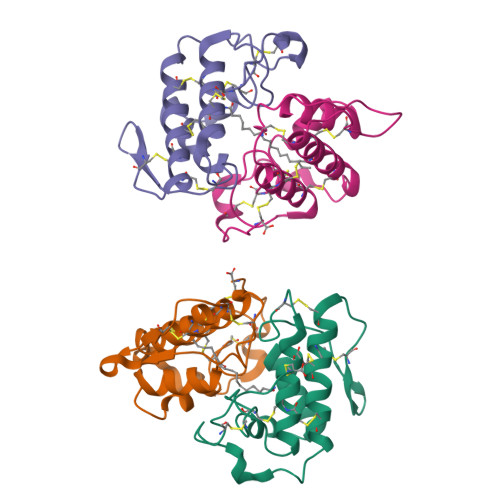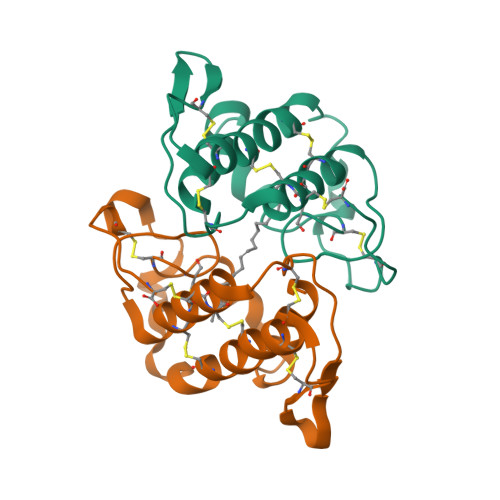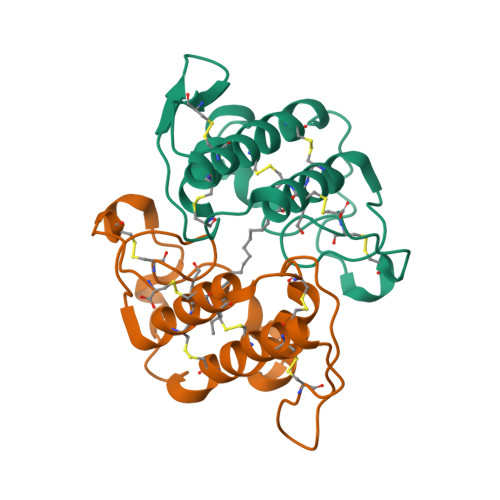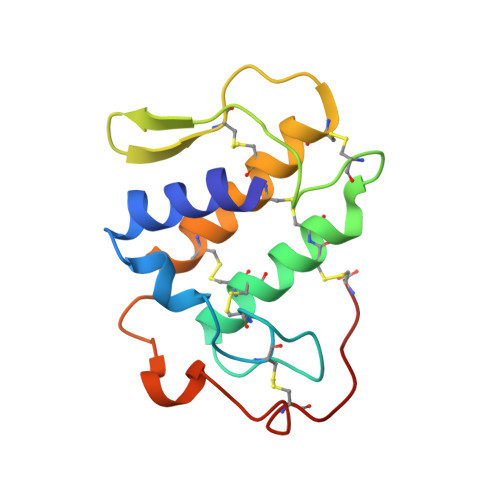Asp49 phospholipase A(2)-elaidoylamide complex: a new mode of inhibition.
Georgieva, D.N., Rypniewski, W., Gabdoulkhakov, A., Genov, N., Betzel, C.(2004) Biochem Biophys Res Commun 319: 1314-1321
- PubMed: 15194511
- DOI: https://doi.org/10.1016/j.bbrc.2004.05.106
- Primary Citation of Related Structures:
1RGB - PubMed Abstract:
The inhibition of phospholipase A(2)s (PLA(2)s) is of pharmacological and therapeutic interest because these enzymes are involved in several inflammatory diseases. Elaidoylamide is a powerful inhibitor of a neurotoxic PLA(2) from the Vipera ammodytes meridionalis venom. The X-ray structure of the enzyme-inhibitor complex reveals a new mode of Asp49 PLA(2) inhibition by a fatty acid hydrocarbon chain. The structure contains two identical homodimers in the asymmetric unit. In each dimer one subunit is rotated by 180 degrees with respect to the other and the two molecules are oriented head-to-tail. One molecule of elaidoylamide is bound simultaneously to the substrate binding sites of two associated neurotoxic phospholipase A(2) molecules. The inhibitor binds symmetrically to the hydrophobic channels of the two monomers. The structure can be used to design anti-inflammatory drugs.
Organizational Affiliation:
Institut für Biochemie und Molekularbiologie I, Universitätsklinikum Hamburg-Eppendorf, Hamburg, Germany.


















